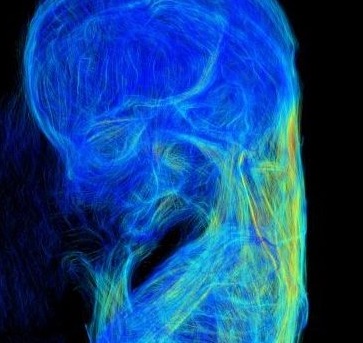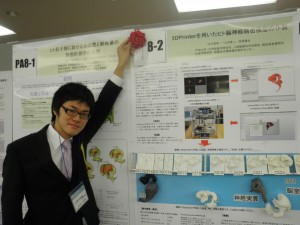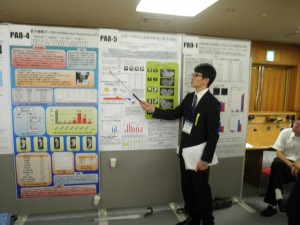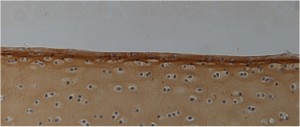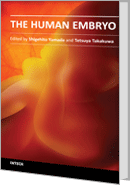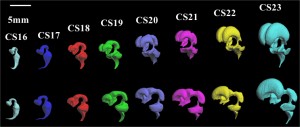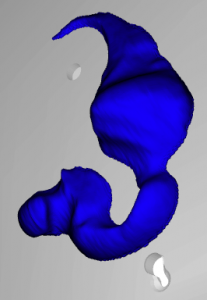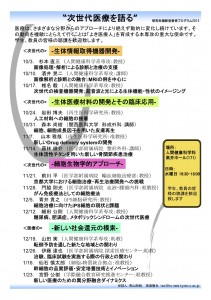 次世代の医療は、医学研究科だけでなく、さまざまな分野の学生が担って行く可能性があります。今回は、その代表として理工学、細胞生物学、地域・社会学からのアプローチを取り上げ、医療の動向を議論したいと思います。本プログラムを聴講した様々な分野の学生が、次世代の医療に繋がるヒントを得て、思いもかけない連携が生まれるかもしれません。それは、この上なく喜ばしいことです。
次世代の医療は、医学研究科だけでなく、さまざまな分野の学生が担って行く可能性があります。今回は、その代表として理工学、細胞生物学、地域・社会学からのアプローチを取り上げ、医療の動向を議論したいと思います。本プログラムを聴講した様々な分野の学生が、次世代の医療に繋がるヒントを得て、思いもかけない連携が生まれるかもしれません。それは、この上なく喜ばしいことです。
■ 研究科横断型プログラムについてのポスター.pdf
理工学、細胞生物学、地域・社会学の3領域からの医療への取り組みを専門家に紹介していただき、討論をします。
<次世代の生体情報取得機器開発>
10/3. 杉本 直三(京都大学大学院 医学研究科 人間健康 科学系専攻:教授)
画像処理・解析による診断と治療の支援
10/10. 酒井 晃二(京都大学大学院 医学研究科 人間健康科学系専攻:講師)
画像解析と診断との融合:MRIの例を中心に
10/17. 椎名 毅(京都大学大学院 医学研究科 人間健康科学系専攻:教授)
次世代の検査機器開発;超音波と光による生体機能・性状のイメージング
<次世代の生体医療材料の開発とその臨床応用>
10/24. 岩田 博夫(京都大学 再生医科学研究所:教授)
人工材料への細胞の接着
10/31. 森本 尚樹(関西医科大学形成外科:講師)
細胞、細胞成長因子を用いた皮膚再生
11/7. 山本 雅哉(京都大学 再生医科学研究所:准教授)
新しいDrug delivery systemの開発
11/14. 藤林 俊介(京都大学 医学部附属病院整形外科:講師)
生体活性チタンを用いた新しい骨関節疾患治療
<次世代の細胞生物学的アプローチ>
11/21. 前川 平(京都大学 医学部附属病院 輸血細胞治療部:教授)
京都大学における細胞治療・再生治療開発への挑戦
11/28. 門脇 則光(京都大学 医学部附属病院 血液・腫瘍内科:准教授)
がん免疫療法としての細胞療法
12/5. 青井 貴之(京都大学 iPS細胞研究所:教授)
細胞治療に向けたiPS細胞の現状と課題
12/12. 細田 公則(京都大学大学院 医学研究科 人間健康科学系専攻:教授)
糖尿病、肥満症、メタボリックシンドロームの次世代医療
<医療の新しい社会還元の模索>
12/19. 山田 実(京都大学大学院 医学研究科 人間健康科学系専攻:助教)
転倒予防を通した新たな地域との関わり
12/26. 伊藤 達也(京都大学 医学部附属病院 探索医療センター:助教)
治験、臨床試験を実施する際の行政との関わり
1/16. 仙石 慎太郎(京都大学 細胞-物質統合拠点:准教授)
幹細胞の品質評価・安定培養技術とイノベーション
1/23. 宮野 公樹(京都大学 学際融合教育研究推進センター:准教授)
新しい医療のための異分野融合ダイナミクス
